Gae Aulenti's Pipistrello lamp: much more than a table lamp
It is not unusual to find oneself reading some novel and come across a description of an interior in which the presence of a Pipistrello lamp by Gae Aulenti (Palazzolo dello Stella, 1927 - Milan, 2012) is mentioned. It was indeed, and still is, one of the most appreciated table lamps in the history of Italian design, as well as being one of the most well-known and recognizable objects of 1960s design. It is a lamp that has always stood out for its unique and original design, combining elements of art and industrial design. The shape of the lamp is inspired by the figure of a bat, with its large wings extending overhead to support the light source. The base of the lamp is made of chrome-plated steel, while the wings are made of white opal methacrylate. The light source is four bulbs that emit a warm, diffused light.
Gae Aulenti’s Pipistrello was first designed in 1965 to furnish Olivetti ’s stores in Paris and Buenos Aires, after which it was mass-produced by the Martinelli Luce company, which still manufactures and sells it. Aulenti had come into contact with the Lucca-based company’s founder, Elio Martinelli, through a friend of his, also from Tuscany, Sergio Camilli, founder of Poltronova, a company with which the designer was collaborating at the time. Camilli himself was the first recipient of the project, but realizing that it was impossible for his company to start production of the Pipistrello, he suggested that her friend turn to Elio Martinelli, offering to accompany her. It was, in fact, not a very simple project for the time, presenting difficulties, especially in the making of the telescope and the lampshade. However, the obstacles were overcome (Elio Martinelli personally took care of creating the suitable mold for the shade), and in 1967 the Pipistrello could be put on the market.
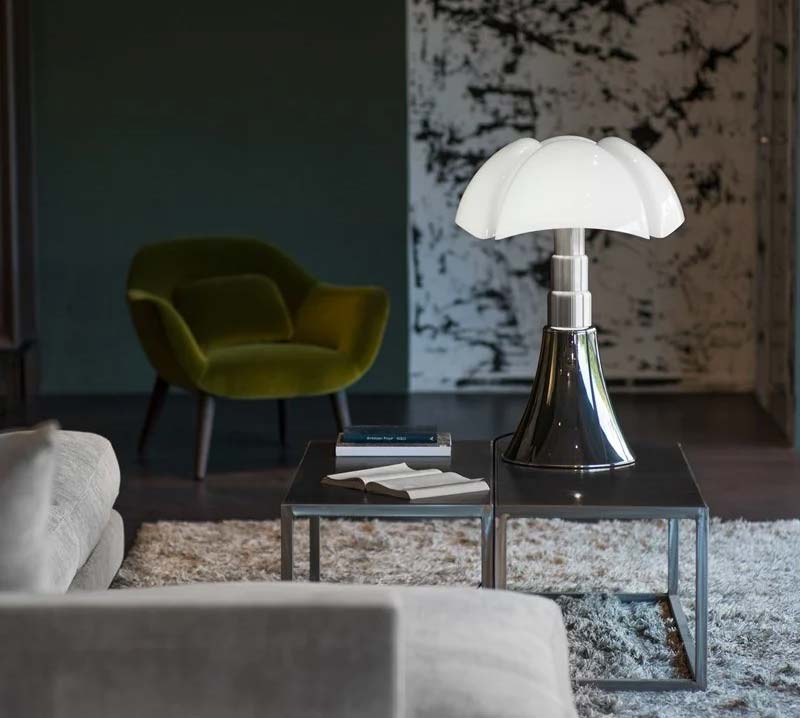
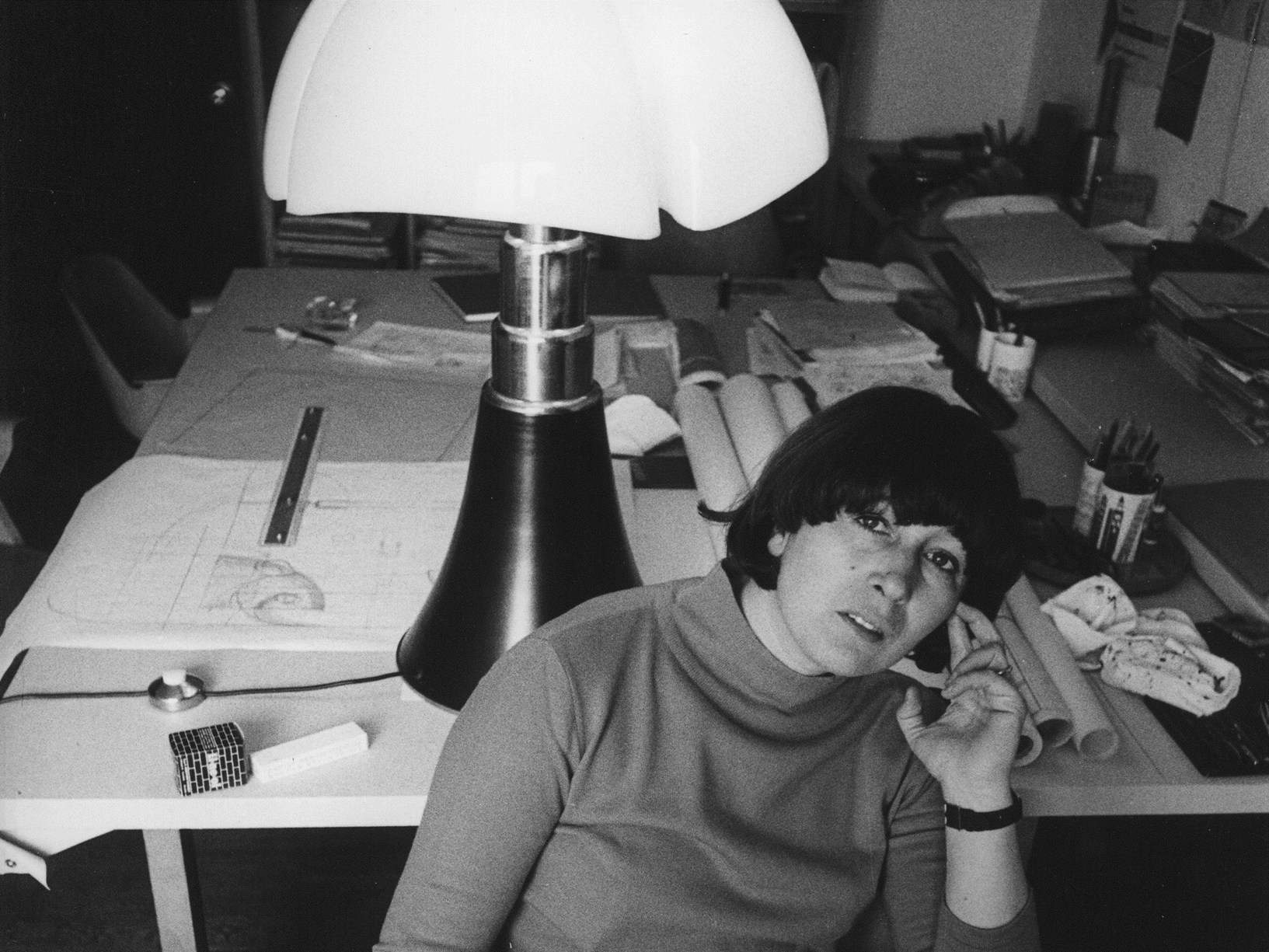
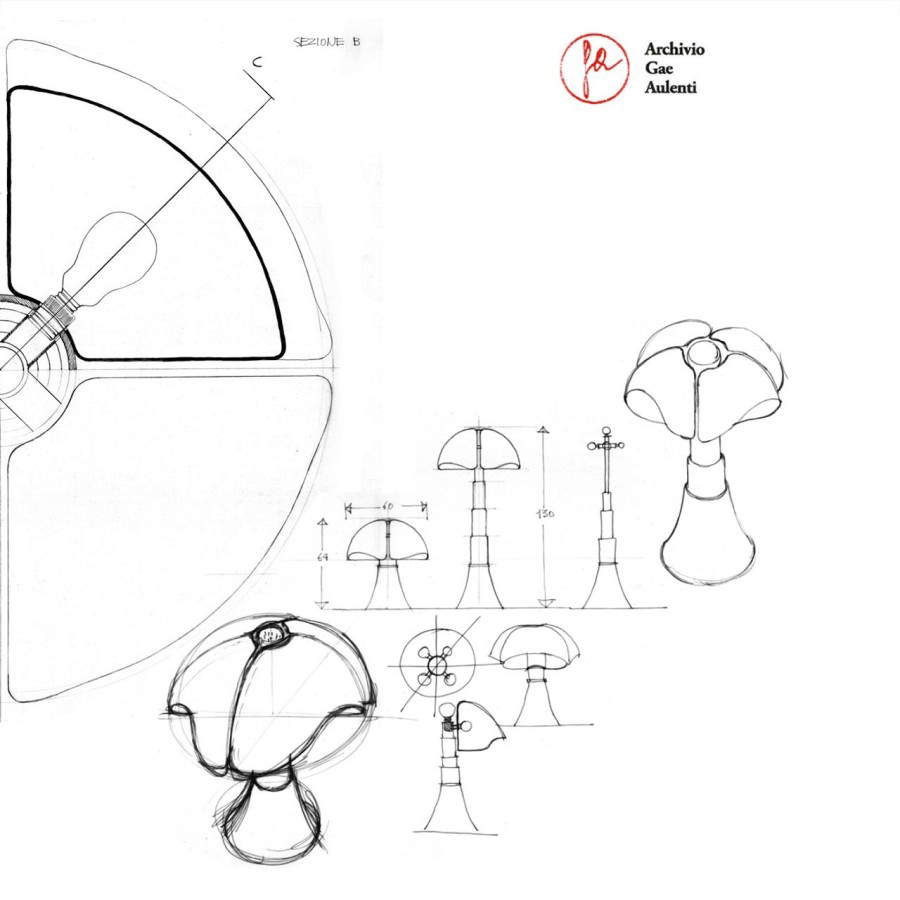
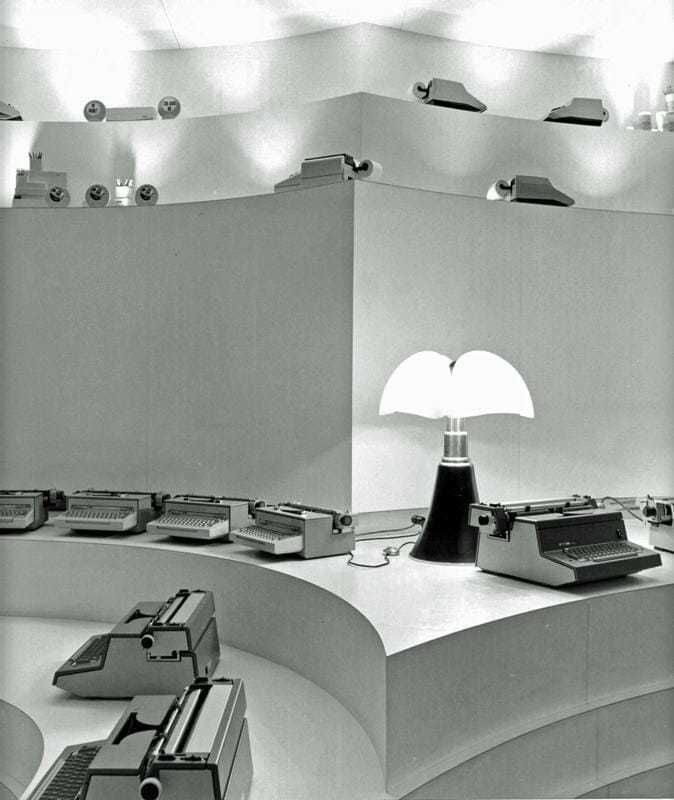
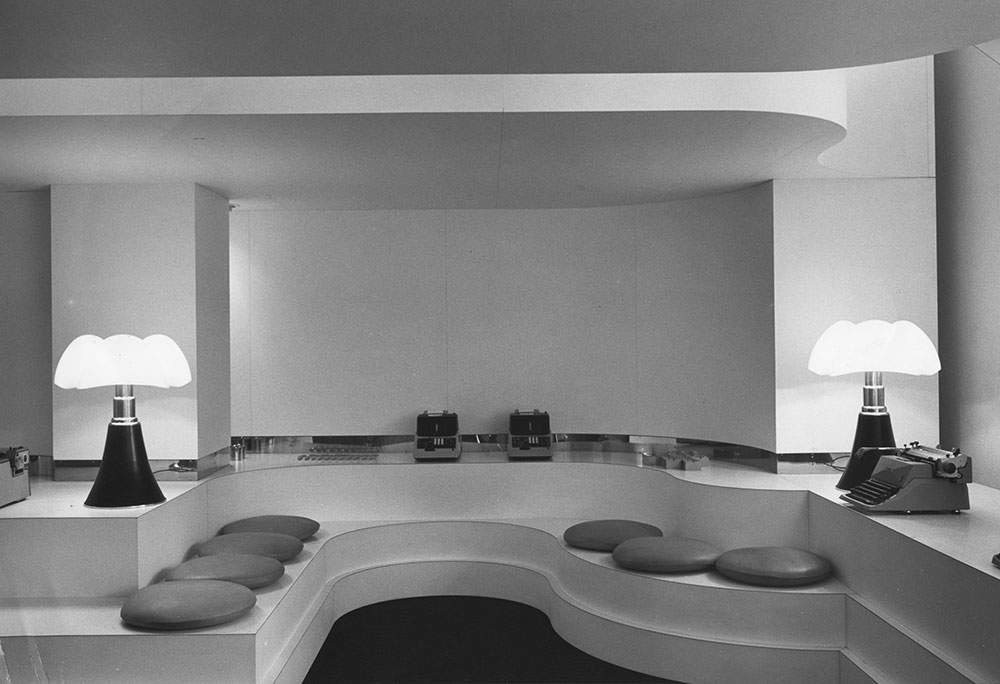
From its first appearance, the Pipistrello lamp quickly became a symbol of Italian design in the 1960s, and it remains to this day one of Gae Aulenti’s most famous and appreciated creations. It has been displayed in many art and design exhibitions (starting with the seminal Italy. The new domestic landscape that was held at MoMA in New York in 1972 and helped launch the Bat), has received numerous awards and prizes, and has entered the collections of the Centre Pompidou in Paris, MoMA in New York, the Metrpoolitan in New York, and the Musée des Arts Décoratifs in Montreal. In fact, its unique, original and decidedly curious shape has made it a particularly adaptable table lamp, able to figure well within both classical and contemporary settings. Its versatility then allows it to adapt to numerous contexts, from the bedroom to the living room, from the study to the office, becoming a true interior design element. An example, in essence, of how creativity, craftsmanship and innovation can create a work that even today, more than fifty years after its creation, is considered a piece of contemporary design.
It consists of a chrome-plated steel base, with painted aluminum trim available in different colors (e.g., white, red, green, dark brown, black: the latter is considered the classic color), which serves as a support for the telescope that is also made of stainless steel and allows the lamp to be adjusted in height with a’range of about twenty centimeters (from sixty-six to eighty-six, to make the lamp reach a maximum height of one meter and thirty), and by a methacrylate shade in the shape of bat wings, with exposed ribs reminiscent of the animal’s wings spread during flight. The light source is provided by four bulbs positioned inside each of the wings. The unique shape of the wings and the position of the bulbs create a warm, diffuse illumination that spreads throughout the room.
According to the scholar Ruggero Torti, Gae Aulenti’s Pipistrello lamp is also interesting for its relationship with twentieth-century art, “in that,” he wrote, “with its references to Art Nouveau, as a reaction to a prevailing rationalism, it is marked by the recovery of the values of the past and by the new current of Neoliberty of which Gae Aulenti will forever be a part.” It has been observed how this recovery of the past also passes through the recollection of the form of a column, with the plinth consisting of the base, the shaft recalled by the telescope, and the lampshade whose task is to refer back to the capital. It thus becomes clear how the great designer did not consider her lamp merely as a device for emitting light, but as a form in relation to a context, namely the space in which it is installed. In 1991, in an interview with architect and designer Franco Raggi, Aulenti (who, moreover, on this very occasion rejected the label “neoliberty” for the Pipistrello: in fact, the lamp eschews precise stylistic rules, and the very elements that compose it can almost be considered autonomous) claimed in fact that she had “almost never designed lamps on their own”: “my lamps,” the designer asserted, “are a consequence, I have always designed lamps for specific places, some then went into production.” In the 1965 design note, Aulenti had in fact described the Pipistrello as a lamp “designed for a certain space, sized for a relationship with other objects, designed for a relationship with other forms with which it would come into contact in a stylistically characterizing combination: the parallel lines, the cone shape, the ovoid shape, the axes of symmetry, the inclined planes.”
It should then be reiterated how the Pipistrello is the result of a “peculiarly feminine” talent, as architect Umberto Rovelli wrote in an essay devoted precisely to the lamp, since the design reveals Gae Aulenti’s ability “to mix and relate practical needs and morphologies, warp themes and sub-themes according to a ’metonymic’ chain that seems to proceed almost manually, step by step until it involves the entire plot of the work.” And again according to Rovelli, despite the fact that the LED variant “struggles today to give an exhaustive account of its morphology,” the Bat Lamp is nevertheless “still allowed to recover reasons and senses to its own ’theatrical’ replication in the continuity of a ’memory’ plastic-manufacturing, that is, in the capacity for multigenerational ’durability’ and ’recognizability’ offered by forms that are now sublimated into models, where the suggestive charge of an era has as if frozen forever.”
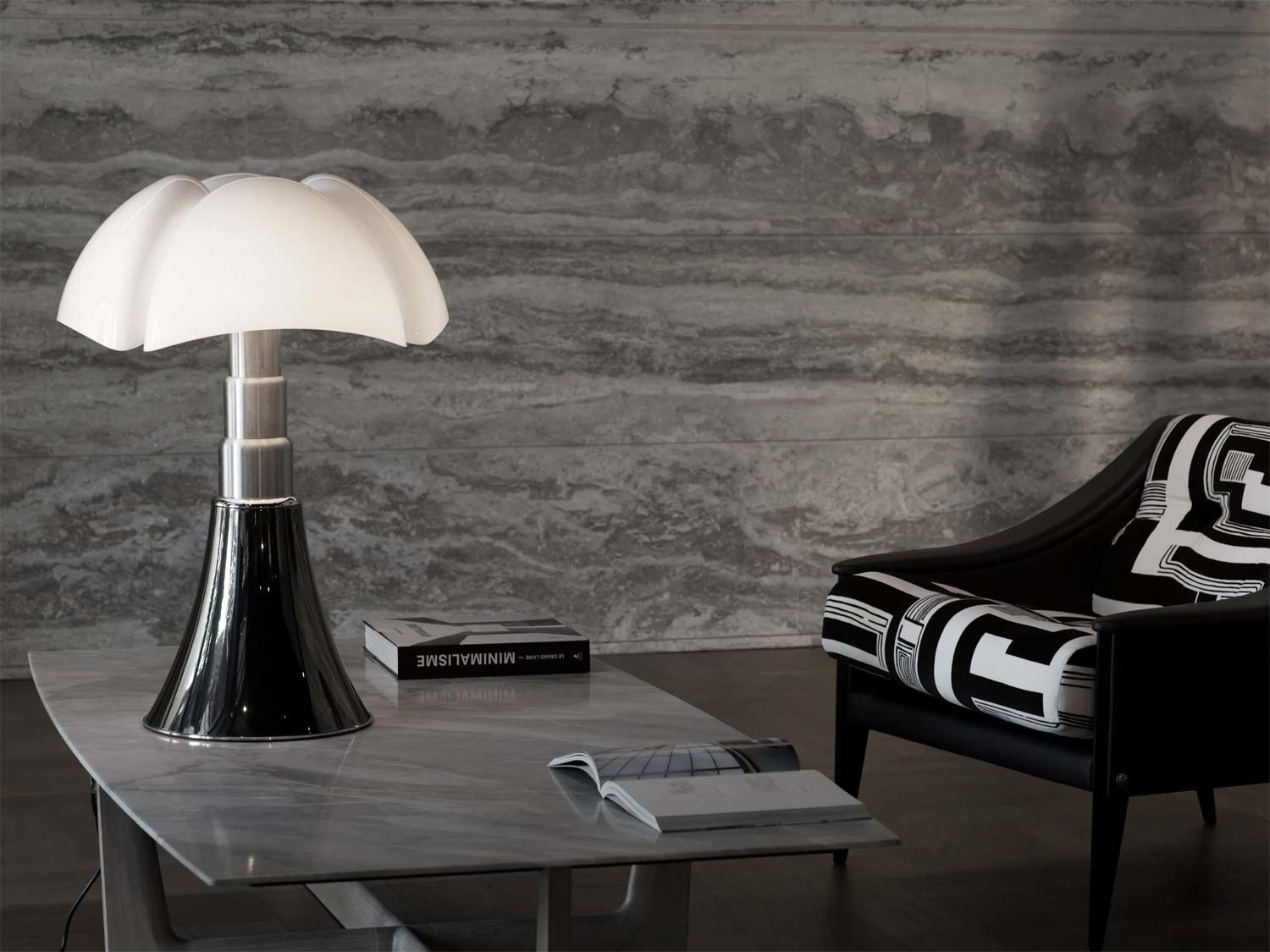
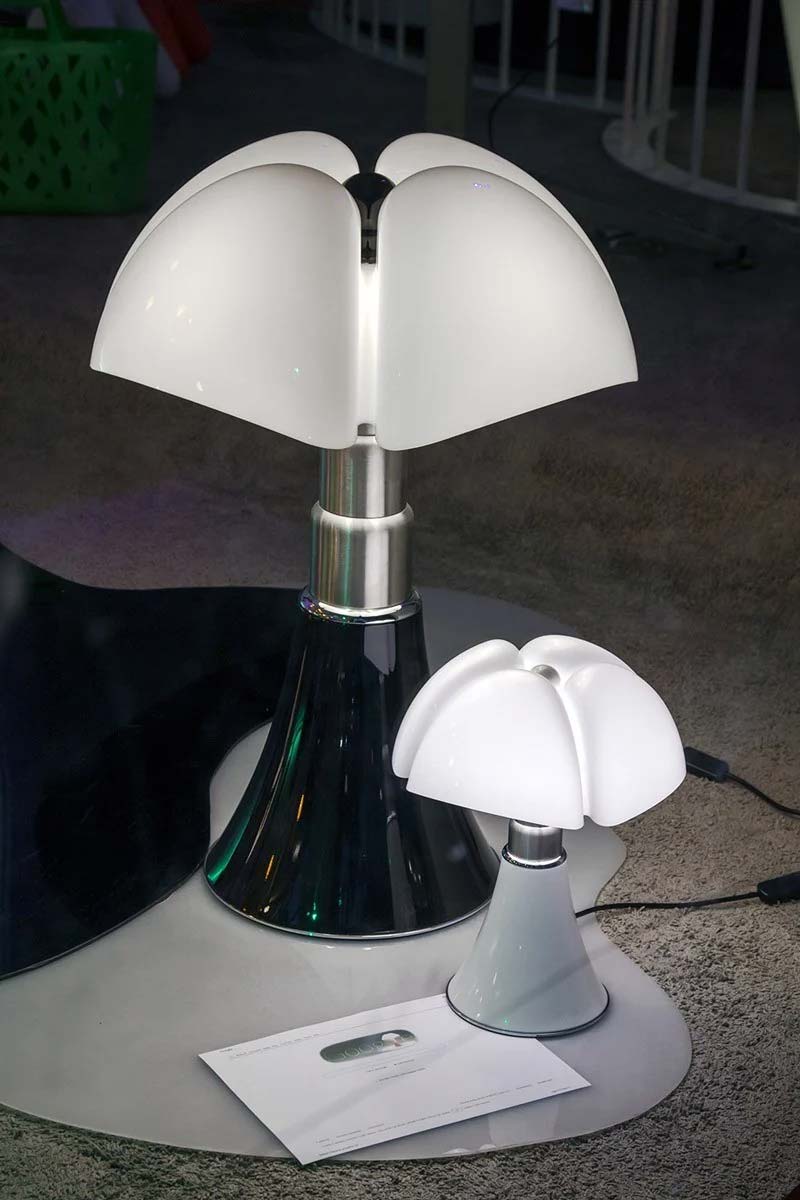 Pipistrello
Pipistrello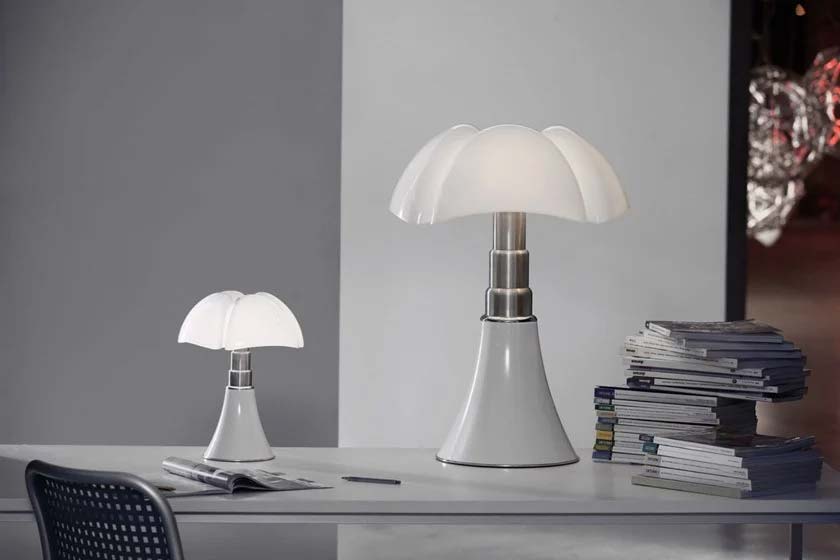 Pipistrello
Pipistrello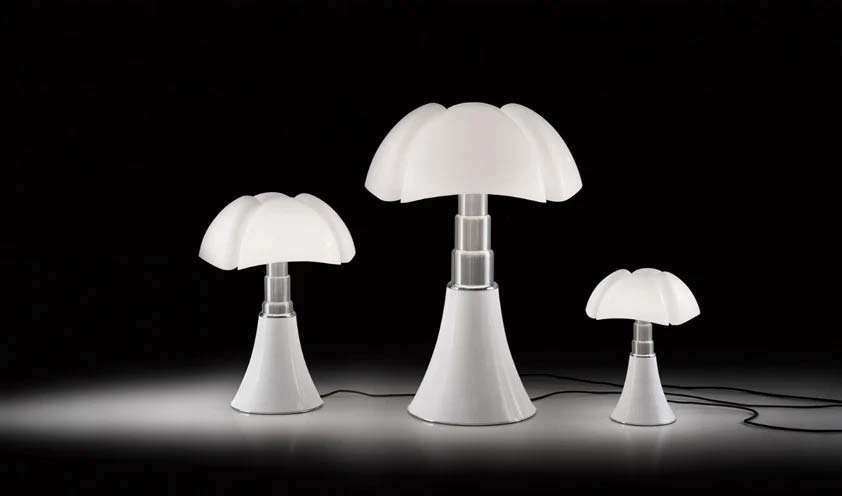
Gae Aulenti’s Pipistrello has indeed achieved great success since its creation in the 1960s. Its unique and original shape, inspired by the figure of a bat, made it instantly recognizable, its artistic references made it popular even with an audience of sophisticated tastes, its adaptability made it a suitable object for all environments allowing it to further expand its target audience, and in addition it been produced in different variants (such as the Pipistrello Mini, put on the market in 2013, the same lamp but on a smaller scale, even more adaptable, and also made in a cordless version, or the Pipistrello Medium, smaller in size than the original but larger than the Mini, and then again the Led version and finally, in 2015, for its 50th birthday, a variant with a gold-plated base and knob, in a limited edition) and in different colors, which, however, have not altered its soul. The lamp’s success has been amplified by its production and distribution by Martinelli Luce, a company specializing in lighting that has been able to enhance and promote this product worldwide. It is precisely the combination of Gae Aulenti’s talent, Elio Martinelli’s production and design experience, and his company’s specialization that is another key to the lamp’s long-lasting success, according to Rovelli.
Those who want to buy a Pipistrello have several options: first, it can be purchased from Martinelli Luce’s website. On the other hand, those who want to see it live can look through furniture and design stores that offer a wide selection of design products, including Gae Aulenti’s Pipistrello lamp. Some of the most famous chains of furniture and design stores, both in Italy and abroad, offer the lamp among their products. In addition, the Pipistrello is also available in some antique and second-hand stores. You can also search on e-commerce sites specializing in furniture design, where you can find a wide selection of products, including Gae Aulenti’s Pipistrello lamp, trying not to run into imitations.
Finally, a curiosity: on December 4, 2013, which is the day Gae Aulenti would have turned eighty-six, the Italian version of the search engine Google wanted to pay tribute to her with a Doodle (the logo that appears on all pages of the engine, the one with the Google inscription) dedicated to her. And in the Doodle made for the occasion, the “L” of Google took the form of the Bat lamp, which illuminated the entire inscription. One with a red base had been chosen for the occasion. A further attestation of how iconic its lamp is.
Warning: the translation into English of the original Italian article was created using automatic tools. We undertake to review all articles, but we do not guarantee the total absence of inaccuracies in the translation due to the program. You can find the original by clicking on the ITA button. If you find any mistake,please contact us.





























